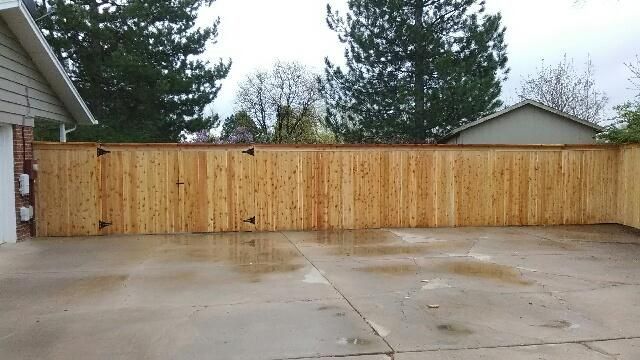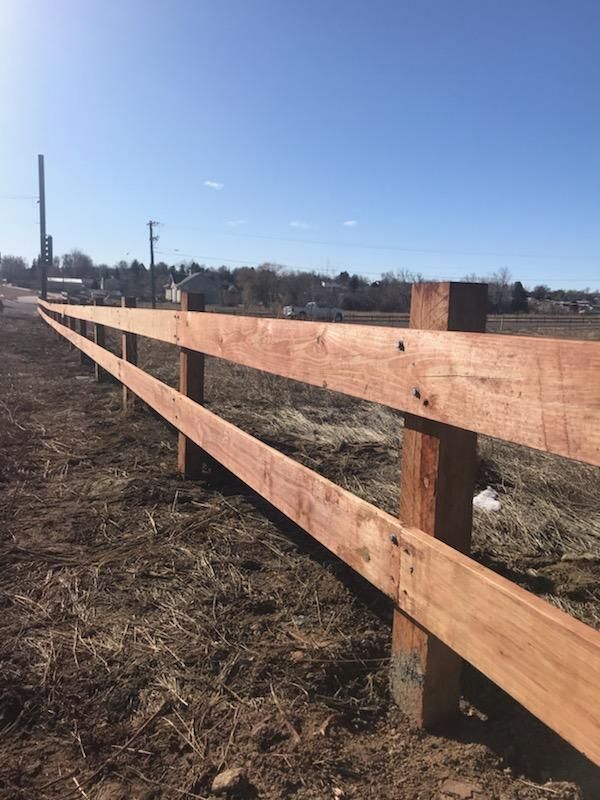Commercial Wood Fence in Denver, Boulder, Broomfield Contractor
Environmentally-Friendly Treated Wood Fencing for a Commercial Wood Fence
Environmentally-friendly treated wood fencing is an excellent option for commercial purposes, providing a sustainable and durable solution that also minimizes the impact on the environment. Traditionally, treated wood has been used for construction, telephone poles, railroad ties, and garden beds to prevent rotting and extend the lifespan of the wood. However, the use of certain wood preservatives can pose risks to human health and the environment. The Environmental Protection Agency (EPA) has been reviewing three heavy-duty wood preservatives: chromated arsenicals, creosote, and pentachlorophenol.
These chemicals have been found to have health risks for workers who apply them and pose risks to the environment. In fact, the EPA has proposed canceling the use of pentachlorophenol due to its risks outweighing its benefits and implementing additional mitigation measures for creosote and chromated arsenicals. As a result, there is a growing demand for environmentally-friendly alternatives to treated wood fencing.
One alternative to traditional treated wood fencing is plastic lumber. Plastic lumber can easily substitute for treated wood in nonstructural applications such as fences, sill plates, and raised beds. Unlike treated wood, plastic lumber does not require any chemical treatments to protect against rotting and insect attack. This makes it a safer and more environmentally-friendly option. Additionally, plastic lumber is highly durable and resistant to moisture, making it a long-lasting solution for commercial fencing needs.
Call Greater Western Fence at 303-469-8261
Pine Wood Fence
Treated pine wood fences offer several benefits that make them a popular choice for Denver & Boulder homeowners. One of the key advantages is their durability. Treated pine wood is more resistant to rot and insect damage compared to untreated wood, which means that these fences can last for many years with fewer repairs.
Additionally, pressure-treated pine wood, which is treated with preservatives such as copper, chromium, and arsenic (CCA), is even more durable and can last up to 20 years or more with proper maintenance.
Another benefit of treated pine wood fences is their low maintenance requirements. These fences do not require frequent staining or painting. However, it is highly recommended to paint or stain the fence as a way to increase its lifespan. Painting or staining not only enhances the appearance of the fence but also provides an additional layer of protection against the elements. Basic maintenance includes cleaning the fence annually, trimming overhanging branches, and inspecting for any signs of damage or termites.
Reapplying paint or stain every 3-5 years is necessary to keep the fence looking its best.
Call Greater Western Fence at 303-469-8261
Beetle Kill Pine Wood
.One of the most reliable uses for Beetle Kill Wood is for pressure-treated fences. The wood, naturally resistant to decay and insects, is ideal for outdoor structures. A pressure treatment process makes the wood even more durable and long-lasting. This means a Beetle Kill Wood fence will look beautiful and stand the test of time, ensuring your investment is worthwhile.
Beetle Kill Pine Wood is gaining popularity as a material for fences and furniture due to its affordability and eco-friendly nature. This type of wood is obtained from trees infested and killed by the mountain pine beetle, giving it a unique and rustic appearance. Beetle-kill pine fencing is a cost-effective alternative to traditional fencing products, allowing Denver & Boulder homeowners to save money while achieving a beautiful and durable fence.
It is important to note that while beetle-kill pine and reclaimed wood may seem similar, they have distinct differences. Many people mistakenly believe they are the same type of wood, but their characteristics set them apart. Reclaimed wood refers to wood salvaged from old buildings or structures, while beetle-kill pine wood can come from Colorado and other mountain states trees killed by the mountain pine beetle infestation.
Both types of wood offer unique aesthetics and environmental benefits, but it's crucial to understand their origins and characteristics when choosing fencing or furniture projects.
Call Greater Western Fence at 303-469-8261


